| Shape: | Fiberglass Yarn |
|---|---|
| Fiber Characteristics: | E-Glass |
| Diameter of Filaments: | Intermediate Fibers |
| Fiber Appearance: | Continous Fiber |
| Glass Composition: | E-Glass |
| Transport Package: | Roll, Pallet |
| Samples: |
|---|
| Customization: |
|---|
Suppliers with verified business licenses
 Audited Supplier
Audited Supplier 






Suppliers with verified business licenses
 Audited Supplier
Audited Supplier